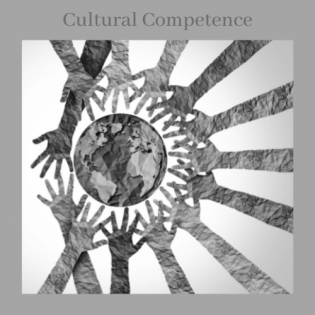Cultural Recognition Months
Why do we have cultural recognition months? The U.S. calendar of holidays includes months like National Hispanic Heritage Month and National Women's History Month in recognition of groups that have been historically underrepresented in the U.S. This lesson explores why and how we put these spotlights on specific months.
Describe the purpose of particular culture-based celebrations (to recognize and appreciate groups who have been historically underrepresented/underserved)
Research what cultural recognition month is approaching. The websites listed in the bibliography below are good places to learn about the purposes and observances.
Display décor and artifacts to honor an observance this month. If it is near Black History Month, for example, teach about lesser known figures than Martin Luther King, Jr., Rosa Parks, Jackie Robinson, Barack Obama, Booker T Washington, and celebrities. Perhaps you can feature an event instead of a person.
Were any of these observances new to you? Which ones were you already familiar with?
- American School Counselor Association. This site lists multiple educational and health awareness dates each month. https://www.schoolcounselor.org/getmedia/dd5fdee1-e207-4178-ab42-0c8cfaae9f31/awareness-calendar.pdf?sso=
- National Archives. The National Archives website lists the purposes for special emphasis programs. https://www.archives.gov/eeo/special-observances
Instructions
Anticipatory Set:
In the last several lessons, we’ve mentioned different cultural groups. Some of them may have been familiar and some may have been new to you. One way that people learn about cultures and groups other than their own is through special recognition months. You may have heard of Black History Month, for example. Have you also heard of Native American Heritage Month?Explain to the group that cultural recognition months are a way to intentionally learn about and eliminate discrimination of groups of people who have been underrepresented and underserved.
Look at the National Archives website under "special observances." This lists observances and the purposes of this recognition program. Discuss.
Remind the youth that people and cultures can be included and respected all year long, but these months are a way to guarantee that a group of people will receive recognition.Discuss with the group:
- What would it be like if we never learned about African Americans, Native Americans, Latin Americans, and women's history?
- How will we know when we no longer need specific months to recognize groups of people?
Giving back to the community: Have the group plan a campaign to highlight an upcoming cultural recognition month in the community (or school or organization). This might include creating a presentation on the history of the observance, the percentage of the community this month represents*, and ways to celebrate.
*This is a great time to look back at demographic data the group found in the Race and Ethnicity lesson!
Philanthropy Framework
-
Strand PHIL.III Philanthropy and the Individual
-
Standard PI 01. Reasons for Individual Philanthropy
-
Benchmark MS.5 Describe the responsibility students have to act in the civil society sector to improve the common good.
-
Benchmark E.5 Give examples of actions students can take to improve the common good and list or describe responsibilities that go with those actions.
-
Benchmark MS.9 Identify pro-social behavior in different cultures and traditions.
-
-
-
Strand PHIL.IV Volunteering and Service
-
Standard VS 04. Raising Private Resources
-
Benchmark MS.3 Develop a service plan.
-
-
